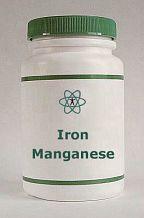
Depending on the scenario, victims might require cardiopulmonary resuscitation, supplemental 100% oxygen, decontamination, and other supportive care. In addition to specific antidotes, cyanide poisoning requires other therapeutic interventions. Employers should heed all aspects of the antidote’s “Indications and Usage” labeling. 2, 4, 5 Because all currently FDA-approved cyanide antidotes are IV infusions, they should only be given by healthcare professionals whose scope of practice includes administration of IV drugs. Ideally, cyanide antidotes should be given soon after exposure to unconscious victims with known or strongly suspected cyanide poisoning.


2 In light of the experts’ recommendation to use hydroxocobalamin, and the absence of amyl nitrite on the FDA list of approved cyanide antidotes, 3 amyl nitrite is no longer an acceptable antidote option.Įmployers that offer antidote therapy for cyanide poisoning should provide one of the FDA-approved products. 3 In 2018, an expert consensus panel determined that hydroxocobalamin is the preferred antidote, but sodium nitrite and sodium thiosulfate are also acceptable. Food and Drug Administration (FDA) stated, as of September 2018, that the only products approved for cyanide poisoning are the following: Cyanokit (hydroxocobalamin injection), Nithiodote (sodium nitrite and sodium thiosulfate for intravenous infusion), sodium nitrite injection, and sodium thiosulfate injection. The three available antidotes are given via intravenous (IV) infusion and, therefore, can only be administered by qualified healthcare professionals.Īntidote kits containing inhaled amyl nitrite are no longer commercially available.Currently, the available cyanide antidotes are hydroxocobalamin, sodium nitrite, and sodium thiosulfate.Amyl nitrite (which was given via inhalation) is no longer available in cyanide antidote kits in the U.S., and is no longer an acceptable initial therapeutic response.This memo provides the following updated information regarding cyanide antidotes: According to current literature, hydroxy cobalamine has had limited use as an alternative intravenous medication to the widely accepted sodium nitrite protocol.” 1 This memorandum serves as new guidance to address outdated information provided in OSHA’s archived memo dated May 17, 1988, from the Office of Occupational Medicine, and entitled “Cyanide Antidote Kits.” The prior memo stated in part, “ Amyl Nitrite continues to require a physician’s prescription and the administration of this drug in an emergency situation by the designated first aide responder is the medically accepted initial response. KAPUST, Acting Directorĭirectorate of Enforcement Programs SUBJECT: Cyanide Antidotes Principal Deputy Assistant Secretary FROM: LEE ANNE JILLINGS, Acting Directorĭirectorate of Technical Support and Emergency Management PATRICK J. The iron is corrosive to the stomach and intestinal lining, causing bleeding and possibly abdominal perforation.STATE PLAN DESIGNEES THROUGH: LOREN SWEATT The level of toxicity from iron depends on how much is already in your dog’s blood at the time and how much is ingested. Iron toxicity is not always caused by medication but is also in heating pads, pesticides, fertilizer, and even oxygen absorbers that are found in dried or dehydrated foods.

Iron poisoning is a common occurrence in dogs, and can be fatal if not treated right away. Even if your dog only shows mild gastrointestinal symptoms (diarrhea or vomiting), your dog can develop these strictures, so even if your dog shows no signs of distress, it is important to see the veterinarian if you suspect he has ingested a toxic amount of iron.Īlthough iron is the most common trace mineral in your dog’s body, it is incredibly toxic to the tissues when there is too much in the blood. Up to six weeks later, your dog can develop intestinal strictures and blockages. This is when the worst of the clinical symptoms occur, such as muscle tremors, bloody diarrhea, rapid heart rate, jaundice, hypotension, seizures, organ damage, shock, and possibly death if it is not treated right away. The second stage occurs between 6 and 24 hours when your dog seems to be completely better.

The first stage occurs in the first 6 hours, in which your dog goes through gastrointestinal problems, such as vomiting and diarrhea. There are four stages of iron toxicosis, which your dog goes through in the first few hours until six weeks later.


 0 kommentar(er)
0 kommentar(er)
